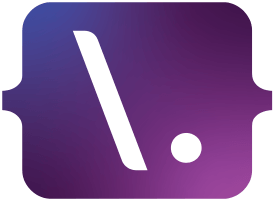
Issue 698
7th February 2025
Written by Dave Verwer
Comment
Typical! I read about the new version of Swift Playgrounds (now renamed to “Swift Playground”) only a few minutes after publishing last week’s issue that mentioned it several times. 🤡
The release notes were a little lacking, so I was grateful to James Froggatt for breaking down the changes in more detail.
The only significant change not mentioned in James’ article was that, unfortunately, the playground subscriptions functionality has now been removed. It had been in the product since the 2.0 release, and my guess is that Apple removed it due to lack of use. I hope that anyone who did use it follows Ale Mohamad’s example of making them available in a different form.
I’m happy to see Apple continue to update and invest in the product, and the fact that it had a name change means it’s getting attention over and above “bug fixes and improvements”, but it needs much more work if it’s going to compete as a serious tool. For example, this version 4.6 update includes support for the iOS 18 SDK, which Apple took out of beta and released almost four months ago. You might also want to read James’ wish list for iPad Coding that he published just a few days before this release. There’s plenty of room for improvement, and I’m sure you could add more items to his list.
Will we see a new Swift Playground 5.0 major release announced at this year’s WWDC to follow the name change?
– Dave Verwer
Sponsored Link
Try the all NEW RevenueCat Paywalls builder today!Try the beta for the new highly flexible, natively rendering Paywall UI framework from RevenueCat. With RevenueCat Paywalls you can remotely configure and edit your entire paywall view without waiting on App Review. See how it works here.
News
The Next Chapter in Swift Build TechnologiesThis announcement from Owen Voorhees on the Swift team was the big news of last week, a brand new and open-source build system! The difference between Swift build and Xcode build has been a pain point for people working with Swift for years. Especially for people working on projects that are not iOS or Mac apps. I’m so happy to see this announced, and I hope the timing means it will be included, even if it’s not default, in Xcode 17. 🎉
Also, and I’ll say this every time it happens. It’s so good to see these announcements from the Swift team happen outside of Apple events. This announcement happened at last week’s FOSDEM conference. 🎉
Code
Understanding SwiftUI PreferencesWhen I started reading this post from Peter Friese I thought I was in for a treat of an article about how to make Form elements in SwiftUI look good on macOS. I was surprised, but not disappointed to discover that instead, it was about communicating back up the view hierarchy! It’s worth a read.
Making Widgets Interactive using App Intents
Intents are one of those technologies that started with limited uses that grew to be fundamental over time. Here’s Tiago Henriques explaining how to use them to give your app’s widget interactivity.
Drawing maps with Swift Charts
Drawing what with Swift Charts? 😱 It turns out that’s a thing you can do! Thanks to Artem Novichkov for writing up this guide on getting it done.
Business and Marketing
Things that did (and didn’t) contribute to Burnout Buddy’s successBruno Rocha has a great set of tips on creating success through marketing. I thought this statement was particularly interesting:
In my case, ASO was only time-intensive in the first few weeks following the app’s launch. After it picked up some steam and became No.1 in a couple of important keywords, I was able to leave it alone and enjoy full organic growth ever since.
I know the fear of thinking that ASO is a full-time job puts some independent developers off doing any at all. Hopefully this persuades you to give it a go.
Videos
How to Do Apple Search Ads (ASA) Right and Grow Your DownloadsAppFigures got a mention in the last article, and I’ve had this video on my list of potential links for a couple of weeks, so now seems like a good time! It’s a great demonstration of how to set up an Apple Search Ads campaign with a whole load of useful tips along the way. 🤑
Jobs
Staff iOS Engineer @ Outsmart College, Inc. – Team up with former Duolingo execs to tackle long-standing challenges in higher education! Outsmart is looking for a self-organized Staff iOS Engineer with a strong background in UIKit and SwiftUI development. TCA, ML/AI experience nice to have. Startup experience highly desired. – On-site (United States in CA or NY) with some remote work (within US time zones)
And finally...
ELEGNT 🤖
